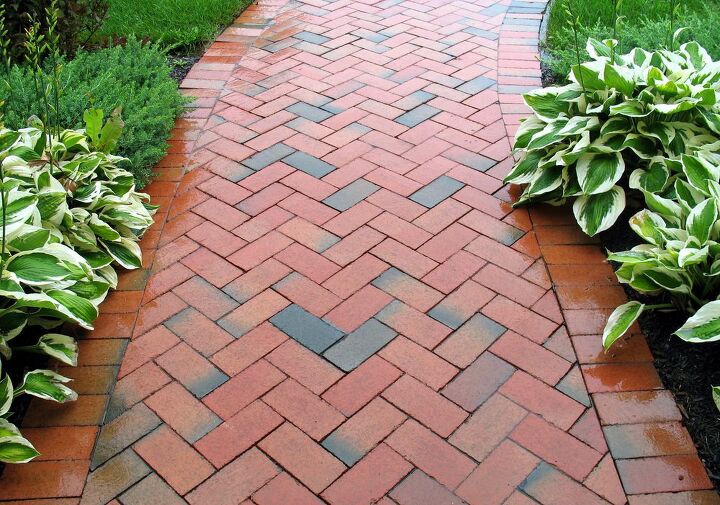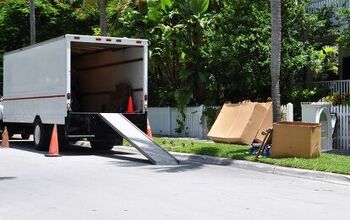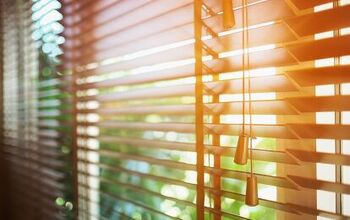Travertine Vs. Brick Pavers: Which One Is Better

One of the most important aspects of any home renovation or new home build is the landscaping. Whether you have a long walkway, a decorative driveway, a massive pool deck, or a small back porch, you’ll want to carefully consider what materials to use to make your landscaping stand out on the block. When it comes to outdoor design and decorating, travertine and brick are popular materials for both their visual appeal and practicality.
Travertine can be considered a type of marble, but is more porous in nature. Travertine is a popular natural stone paving and can come in various different earthy tones from dark brown to almost white. Travertine tiles are also unique in that they can be used both indoor and outdoor— they are popular tiles for pool decks, kitchens, and bathrooms.
Clay brick has been a natural building material for ages and ages. For thousands of years, roads, pathways, courtyards, and even walls have all been made using brick. One of the most elegant pavers for walkways and driveways, brick pavers will hold up well over time. One can’t really go wrong when opting for the truly classic brick look.
When you’re building or remodeling your dream home, travertine and brick are both materials that could work both for and with your design. It’s important to consider all the ins and outs of each product before deciding which one to use.
Travertine is durable, non-slippery, and can work both inside and outside the home. Travertine is also more difficult to install and can stain easily. Brick pavers are classic, durable, and recyclable. Brick is generally less expensive than travertine and can stand up to even the highest traffic areas.
Read on to find out which material is best for your home!
Do You Need Brick and Concrete Patio Paver Installers?
Get free, zero-commitment quotes from pro contractors near you.

Durability
One of the most important factors to consider when looking at travertine and brick is the overall durability of the material. Fortunately, both of these natural products are extremely durable but in different ways.
Moisture and water-resistant, travertine tiles sit very high on the durability scale. This makes them ideal for both indoor and outdoor use. If you’re looking to create a garden pathway or an expansive pool deck, travertine would be an excellent choice. Travertine tiles aren’t going to crack or split easily, especially if they’re cared for correctly. Because travertine is so sturdy, fluctuations in temperature aren’t going to affect it, making it ideal for outdoor landscaping.
Brick is arguably one of the longest-lasting materials on the planet. People all over the world have been making and using brick for a multitude of uses from walls to roads. Brick holds up really well under pressure, making it ideal for places with high-traffic like a driveway or a back patio. While bricks will chip on occasion, their overall function is rarely compromised. As long as you lay down a good base, you’re looking at your brick driveway, walkway, or patio to outlast you.
Maintenance
As with any building material, both travertine and brick require a fair bit of maintenance to get the most out of each product. Of the two, travertine is going to require a fair bit more care and keeping for it to be worth your while.
Look Out For Stains
Maintaining travertine might be a somewhat simple task, but can quickly become time-consuming and require your attention more frequently than brick pavers. Because of its porous nature, travertine will very quickly absorb any spill. Stains are very easily able to penetrate the surface of travertine and stick. Any spill— orange juice, wine, sunblock, etc.— will need to be cleaned up and treated right away to prevent staining.
Travertine tile is going to need to be sealed every so often to prevent any spill or stain from wrecking the surface. You’ll definitely want to seal it upon installation and then every few years after that. If you’re a fan of the glossy surface some travertine can come in, you’ll want to seal even more regularly than every few years.
On the flip side, travertine is designed to be scratch, crack, and chip resistant. You won’t have to worry about damaging the tile in this way as much as you would with brick pavers.
Brick Replacement
Over time, brick pavers will weather under the influence of weather. You’ll want to make sure that you properly maintain your brick so that you can get a solid 25 or so lifespan out of them. Once or twice a year you should wash your brick driveway, porch, or walkway with a pressure washer.
After each washing, you’ll follow with the proper sealer. If bricks are left unsealed and exposed to the elements, they may flake or crack over time. Be sure to keep a stash of brick somewhere on your property so that if one breaks, cracks, or falls apart, you can easily replace it.
You’ll also want to make sure that you’re constantly pulling and treating weeds that may spring up between each individual brick. This means that brick pavers may be a little more daily maintenance than travertine tile, but will hold up better over a longer period of time.
Cost
One of the best advantages to brick pavers is that the installation can easily be done without the assistance of a professional which will save you money in the long run. If you go for the DIY option, you’re going to be saving around $20 per square foot. Because all brick pavers come in standard sizing, you won’t have to mess with a lot of custom cutting like you would with travertine.
On average, brick pavers are going to set you back around $5 per square foot. Depending on what you’re using them for, brick pavers can definitely be a more affordable option. You’re definitely paying for the look and the function with brick—concrete pavers are going to be a lot more affordable but won’t add a level of classic beauty to your home that will only up the potential resale value.
Travertine is a mid-range natural stone when it comes to cost. Prices fluctuate and vary depending on what kind of travertine you’re looking for. It can come as cheap as $3 per square foot or go all the way up to $30 per square foot depending on the quality and finish of the stone. If you’re looking to use travertine for an outdoor space, it’s going to be a lot cheaper than if you’re wanting to use travertine for a kitchen or a bathroom floor.
Installation
Both travertine and brick are somewhat simple and straightforward when it comes to the installation process. You can either do it yourself, or go for a professional.
Of the two, brick is the easier to install:
Step 1: Prepare your base. Outline the area you’re paving using string before laying any material down.
Step 2: Remove the soil or existing pavement to a depth of 12 inches. Add 8-12 inches of gravel, compacting the gravel down as you add layers.
Step 3: Add 1.5 inches of sand to create a level base for your brick pavers.
Step 4: Lay the brick in whatever pattern you’d like— don’t be afraid to get creative!
Step 5: Set each brick by pounding it into the sand then go over it with a heavy roller so the surface is as even as you can get it.
Step 6: Fill in the cracks between bricks with sand. Sand allows rainwater to seep into the ground and not sit on the surface to cause unnecessary moisture damage.
While this DIY project may be more time-consuming than others, it’s definitely worth it in the long run!
Travertine Installation
Travertine tile is much more difficult to install and is usually left to the professionals. Because it is such a tough stone, it requires an extremely heavy-duty blade to cut, one that isn’t in many garage tool collections. A layover of cement board is usually applied before the stones, giving it a sturdy base that won’t bow or flex under the heavyweight of the travertine tiles.
Once all your travertine tiles are laid, the joints are filled with grout. Grouting poses a pretty tricky problem— because travertine is so susceptible to staining, you want to make sure that your grout is applied slowly and carefully so as not to stain your tile. Professionals will most definitely apply a sealer before grouting to save your tile from being permanently damaged.
Related Questions
Is travertine more expensive than brick pavers?
Yes. Because travertine is a natural stone that needs to be specially sourced and cut, it’s going to be more difficult to obtain. Brick pavers are mass-produced and readily available just about everywhere, making them a little bit more affordable.
Does outdoor travertine need to be sealed?
Yes! Every one to two years is ideal. Because of its porous nature, you don’t want your travertine to absorb any unwanted stains or spills.
How do you keep brick pavers from sinking?
Sweep sand into the joints between the pavers. This will create a bond between your bricks and the bedding layer, reducing the chance of your brick pavers sinking over time.
Do You Need Brick and Concrete Patio Paver Installers?
Get free, zero-commitment quotes from pro contractors near you.

Our Takeaway
Both brick pavers and travertine tiles are good investments to make when designing your home. If you’re looking for an elegant and classic look to your outdoors, brick pavers are the way to go. Travertine is going to work for both indoor and outdoor spaces, though might cost you a little more money upfront.
Brick pavers are ideal for the DIYers among us, and will last a long, long time with proper power washing every few years. Travertine is rustic and beautiful, perfect for your pool deck or patio. No matter which one you choose, you’ll be sure to love the outcome!

Paige is an elementary school librarian with a passion for writing. Her hobbies include reading an exorbitant amount of fantasy, slowly teaching herself to draw, and home decor. While she isn't the most talented artist or interior designer, what she lacks in skill she more than makes up for in enthusiasm. When she's not curled up with a book, you can certainly find her curled over the keyboard.
More by Paige Hanawalt



























